Sustainable Caribbean travel: get a real taste of Tobago in the community kitchens keeping traditions alive
In Les Coteaux, a sleepy village between hills in the south of the island, Monica Williams is deboning salted cod fish for buljol, a traditional Tobagonian breakfast dish with red and hot peppers, onion and tomatoes. Sitting on a bench under the corrugated tin roof, still cool from the early morning mist, she squeezes the flesh, starving it of any moisture, and gets onto grate the coconut for a flatbread bake.
On an island where life usually moves slowly, her pace is on par with the upbeat soca tunes blasting from a large speaker early on a Saturday morning. “We’ve been making these dishes for generations; my mother taught me how to cook this, and she learnt it from her mother,” Monica says, while instructing her husband to start the wood fire for the baking. It’s all hands on deck: Prince is on fire duties; their daughter is chopping veg; and I am grating homegrown cacao for the tea she is about to prepare.
Food in Tobago is steeped in history, influenced by its complicated past with the French, Spanish, Dutch and English, who between them colonised the island more than 30 times. Buljol, derived from the French words brulé (burnt) and gueule (muzzle), changed to bu’n jaw in Creole during the 19th century before morphing into buljol. As I travelled the length of tiny island (120 sq miles), smaller than the Isle of Wight, I wanted to meet communities and get an authentic insight into cultures and cuisines.
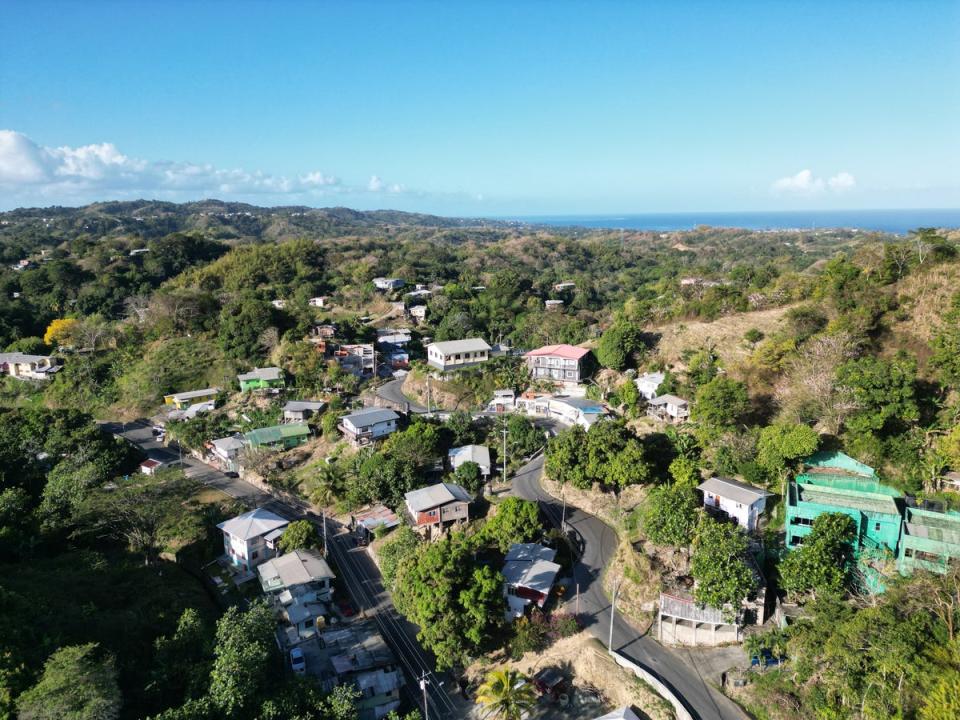
Back at the Williams household, the rested dough is placed inside a piping hot pan, covered with a lid and weighed down with burning coconut husks for added smoky flavour. I watch the coir sizzle and turn momentarily red before going black in seconds. Within minutes, the courtyard is consumed in white fog infused with the fragrance of cocoa, bay leaves and fish.
Breakfast is followed by an intimate music performance by Prince, who is one of few to still play and teach the tambrin, an indigenous percussion instrument believed to be created by slaves after their drums were confiscated on plantations, while their owners grew rich on the growing. “Slaves used drums to communicate with each other when the master was coming. Eventually, the masters found out and took the drums. That’s how tambrin was born.”
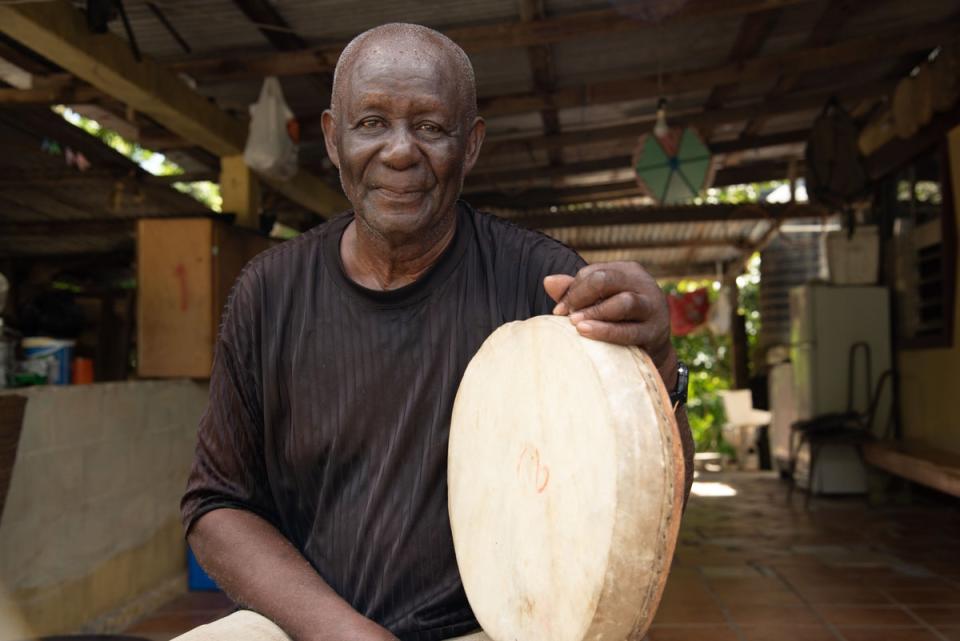
“I’ve been playing it for over 40 years now. This is goatskin wrapped around the bark of a wild cassava tree,” Prince points at the Tobagonian take on a tambourine in his hands. “Long time ago, tambrin was our doctor. If someone was sick and you wanted them to get better, we would organise a tambrin dance, so this person would get better in no time. All the older people are now dead, so we need to use the other doctor,” he says with a hint of humour. Tambrin is an old-school instrument with little appeal to the younger generation who ‘don’t like it much.’
One opportunity to enjoy the sounds of the tambrin in all its glory is during the Tobago Heritage Festival, which takes place from mid-July until Emancipation Day on August 1. The annual two-week celebration spans the island, spotlighting some lesser-known towns and villages away from the typical tourist circuit. The fanfare involves cultural displays through dance performed in elaborate, colourful costumes, oral recitals of tales from bygone days, steelpan music and delectable food prepared using fish, meat and ground provisions like dasheen, yams and cassava.
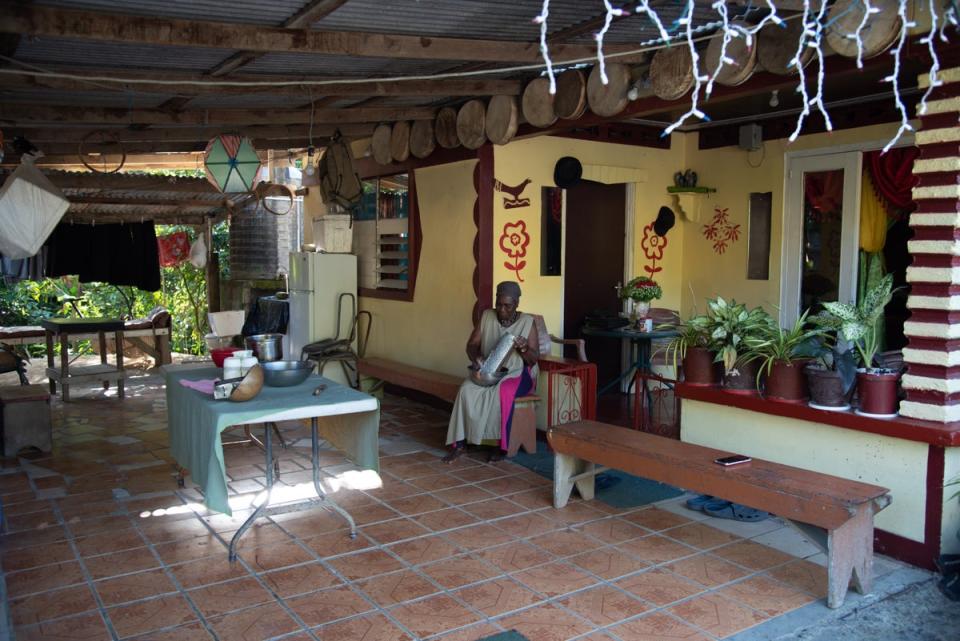
“Tobago has a naturally warm and hospitable population that lends itself to the intimacy of the Community-Based Travel (CBT) model. Each village in Tobago has a harvest festival where residents cook large pots of food and open their doors to friends and strangers alike,” says Wendell Walker from Tobago Tourism Agency. Festivals like these have helped to distribute the concentration of tourists away from the port city of Scarborough.
And there efforts are being recognised. The village of Castara, for example, was selected from 130 applications from 57 countries to join an upgrade programme, part of a United Nations World Tourism Organization (UNWTO) Best Tourism Villages Initiative, Wendell adds. The programme was launched in 2021 to make tourism a driver of rural development and well-being. The upgrade programme gives the village access to UNWTO’s mentoring programme through training sessions, masterclasses and guidance from sector leaders.
Soul food
Greta Trim started her culinary journey selling ice-creams outside the airport before building her own beach hut at Store Bay under the brand Miss Trim’s. Her homemade crab and dumpling recipe grew popular and became synonymous with Tobago’s signature dish- curried crab and dumplings.
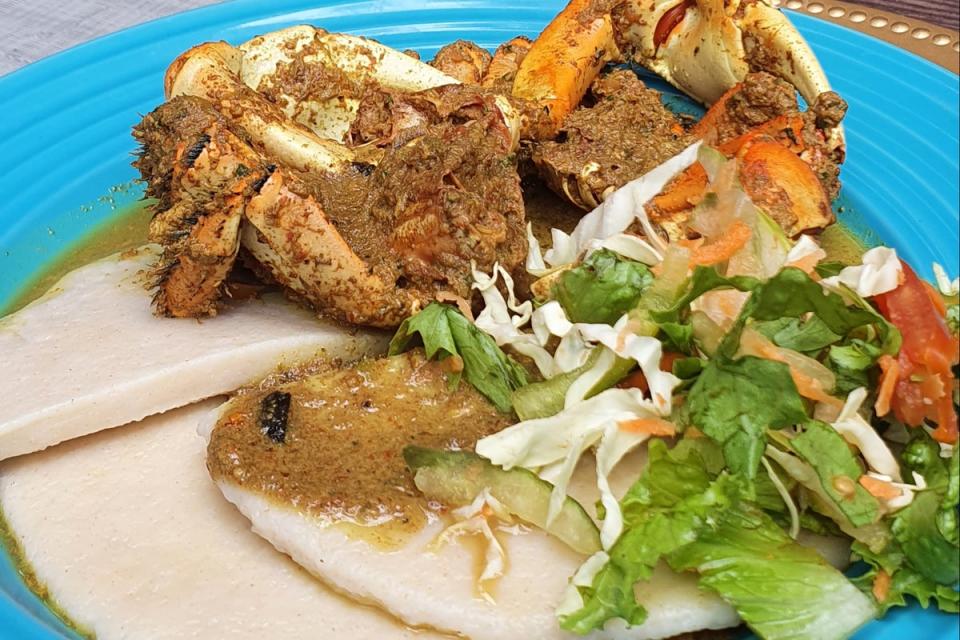
A short distance from the takeaway, I met the 88-year-old at her residence, a double-storey house along a tranquil street surrounded by tall trees and plants. “Are you enjoying the crab?” she asks as I struggle with the tiny creature, a cracker in one hand and a fork pick in another. Greta is frail, speaks softly and walks with the help of a stick. Meisha, the youngest of nine children, has taken it upon herself to carry on her mother’s 40-year legacy and grow the business.
In their commercial kitchen, Meisha takes me through the arduous process of making the most talked about dish on the island. To infuse the meat with flavour, locally sourced crab is marinated in garlic, ginger, chadon beni or culantro (different to cilantro), herbs and spices for two days before being added to coconut milk. The golden-coloured curry is served with dense flour dumplings. Eating this is a messy business, but the reward makes it worth it.
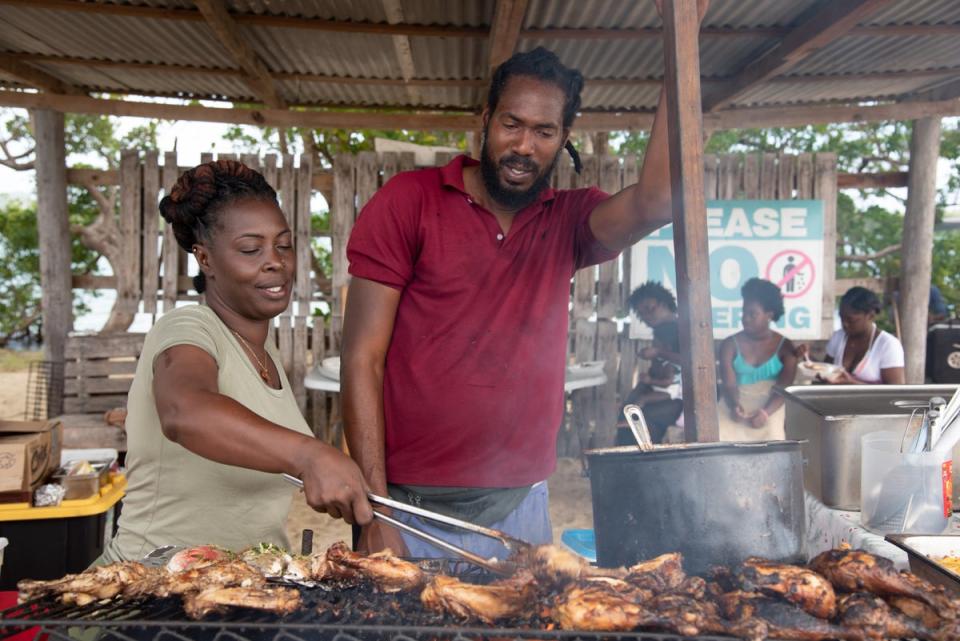
All around the island, from tiny stalls and the back of vans, people sell doubles, a breakfast/ lunch snack introduced to the island by Indian plantation workers who were brought over as indentured labourers. A flimsy piece of paper acts as a plate on top of which the two pieces of flat fried dough called baras are placed, then layered with curried chickpeas and a dash of sweet and sour chutney. Spills and dribbles are part of the experience. Other foods to sample are baiganee (fried aubergine fritters), kachori (sweet and spicy deep-fried snack), aloo pie (potato pie) and bake and shark (flatbread with shark meat).
Baking, old-school style
Under the shade of a large mango tree, inside a small white shed, Nelda Moore and her brother Wendell are kneading, cutting and filling dough to make coconut tarts. “I’m running behind schedule,” Nelda tells me, walking back and forth in a makeshift kitchen in the garden of their New Grange home ten minutes from Scarborough. The concept for Backyard Dirt Oven came about during the pandemic, and already the small business has dedicated customers. Mrs Moore produces a batch of bread and tarts every Thursday and parcels them to pre-ordering customers.
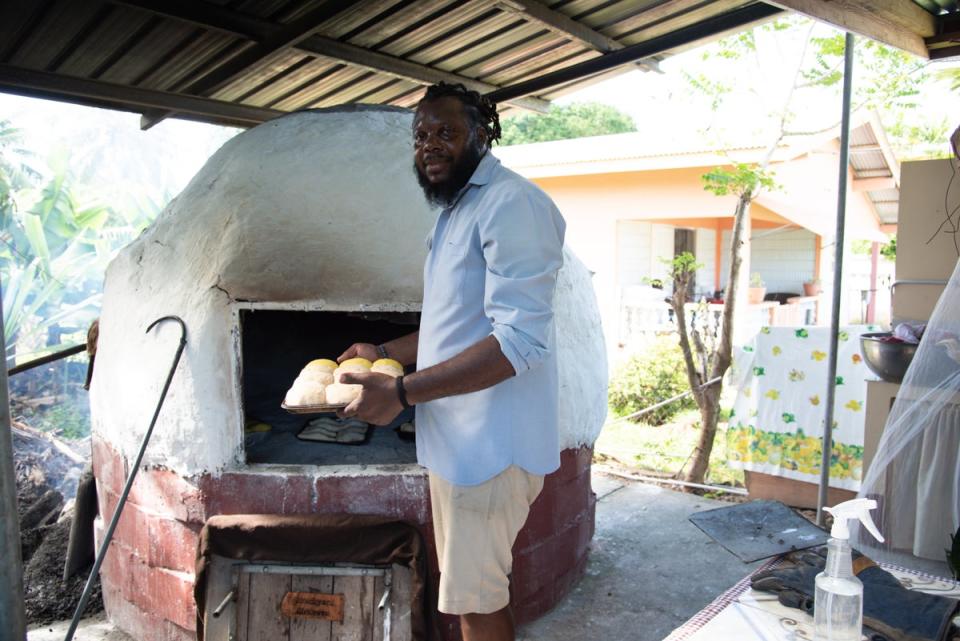
Her son, also called Wendell, is firing the egg-shaped dirt oven for the big batch of bakes. “This used to be how our Creole ancestors would cook,” he says, placing dried logs and coconut stalks before setting them alight. Once the wood turns to ash, he removes it from the oven through the ash hole before wiping the surface clean and placing one tray of pumpkin buns inside to test. It’s all about intuition and experience because there is no temperature or time control. The process is tedious and time-consuming.
I wait a couple of hours in anticipation before biting into a warm, crispy-crust garlic bun with a slice of fresh Tobagonian goat cheese- and it does not disappoint. On the other side of the fence, customers are stopping by to collect their pre-ordered parcels; others are taking a chance to see if there are spares- they are politely turned down. As we leave, Nelda hands me a brown bag with one of each kind. “I make this so people can enjoy them. I often bake more and hand them out to neighbours at the end of the day.”
For more details on community-led initiatives, accommodation options and more information on the festivals and the island's history, visit tobagobeyond.com

 Yahoo News
Yahoo News 
